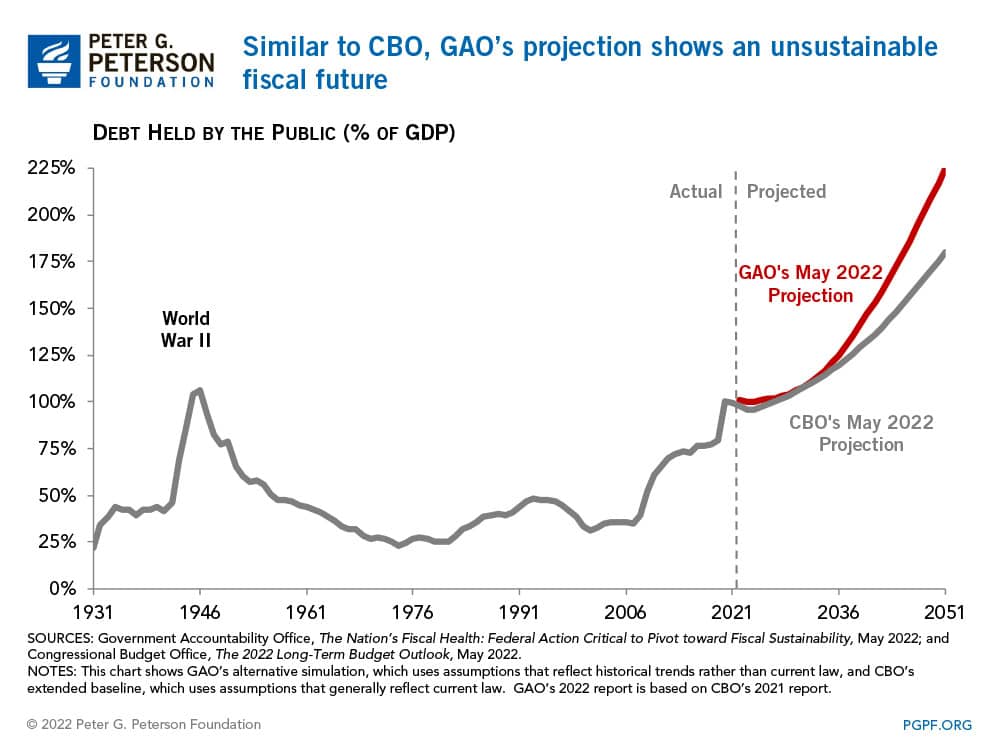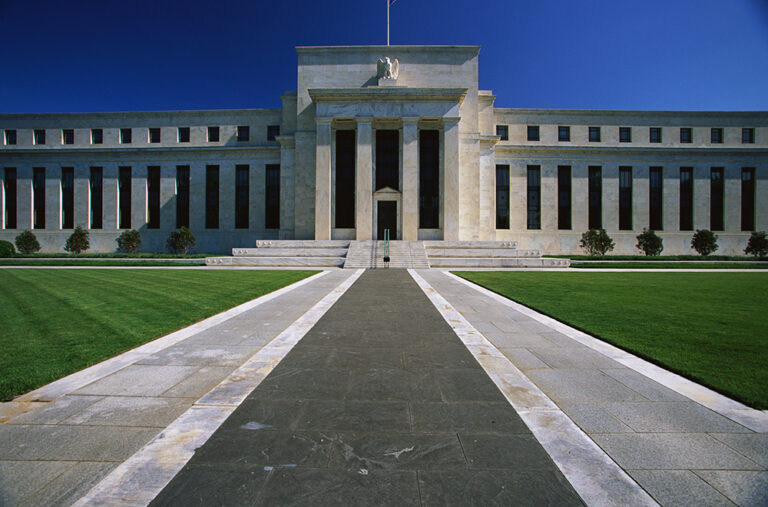A recent report released by the nonpartisan Government Accountability Office (GAO) echoes analysis from the Congressional Budget Office (CBO) and the Administration in warning that federal debt is on an unsustainable path. GAO projects that debt held by the public could more than double over the next 30 years — rising from around 100 percent of gross domestic product (GDP) at the end of fiscal year 2021 to 217 percent in 2050.

Although GAO’s projections are based on estimates from CBO that were issued last year, their findings are similar to recent reporting from CBO that focuses on the structural factors driving an imbalance between spending and revenues:
- Growth in Spending. GAO’s report highlights that federal spending in the future will be driven by increases in healthcare programs, Social Security, and net interest. Each of those spending categories are projected to grow faster than the economy over the next 30 years. By 2050, GAO estimates that federal spending on healthcare and Social Security combined will equal 14.8 percent of GDP, up from 10.2 percent in 2019. Much of that increase is associated with the aging population and the rapidly rising cost of healthcare. Net interest will grow substantially in the long term, eventually becoming the largest “program” in the federal budget within the next 30 years as a result of mounting debt and higher interest rates.
- Inadequate Revenues. GAO’s assumption about revenues through 2031 match CBO’s revenue projections. For those years, projections are based on the expectation that current laws, such as temporary reductions in income tax rates, will expire; on average over the 2023-2031 period, revenues would average 17.8 percent of GDP. After 2032, GAO makes a simplifying assumption that revenues will remain constant at 17.3 percent of GDP, their 50-year historical average. Such levels of revenues are a contributor to GAO’s assertion that “action is needed to change the unsustainable fiscal path.”
GAO’s findings add to a chorus of nonpartisan evidence and analysis showing that action is needed to improve our fiscal outlook so that we can meet future challenges, invest in the next generation, and build a strong and inclusive economy.
Image credit: Photo by Matthijs Bettman / EyeEm / Getty Images
Further Reading
What Are Interest Costs on the National Debt?
Interest costs are on track to become the largest category of spending in the federal budget.
Healthcare Costs Are a Major Driver of the National Debt and Here’s the Biggest Reason Why
Improving the U.S. healthcare system will be crucial to providing quality, affordable healthcare and to bettering our nation’s long-term economic and fiscal well-being.
House Reconciliation Bill Would Add Trillions to the National Debt
The bill would increase debt by $3.0 trillion over the next 10 years, driving it from nearly 100 percent of GDP now to 124 percent of GDP by 2034.


